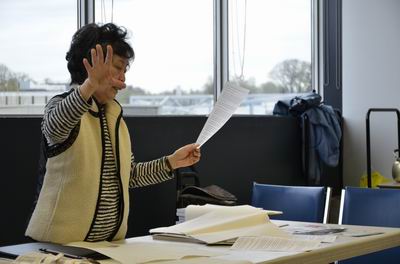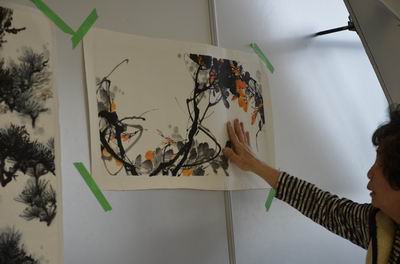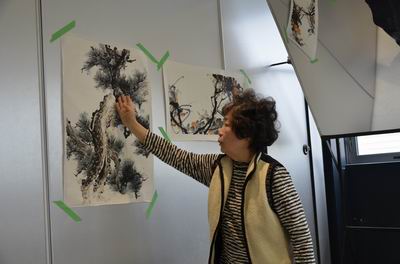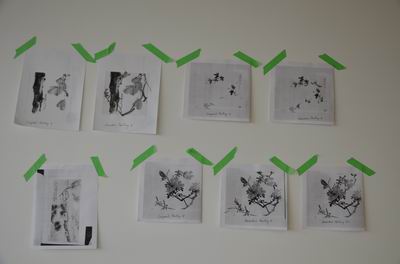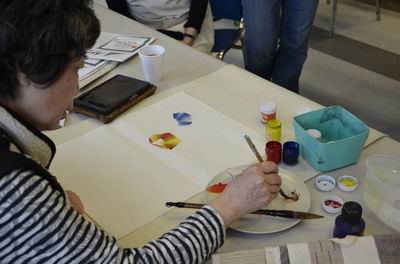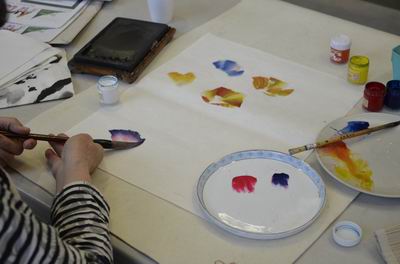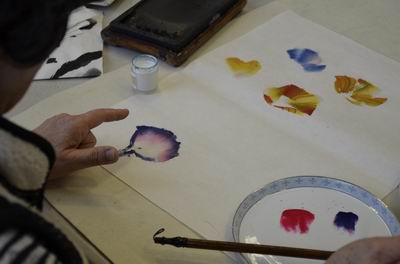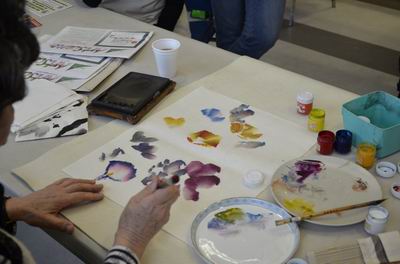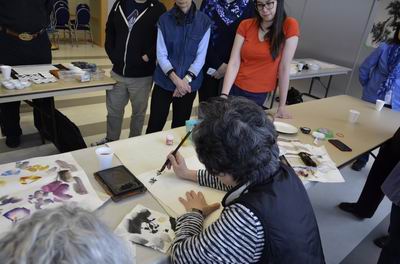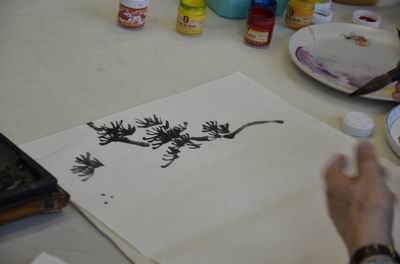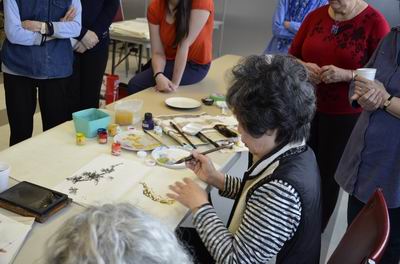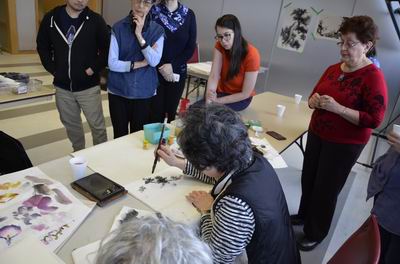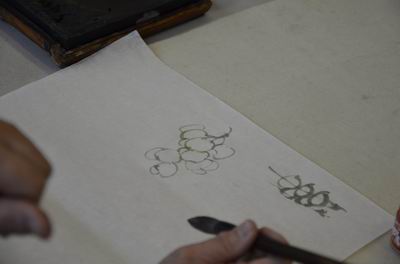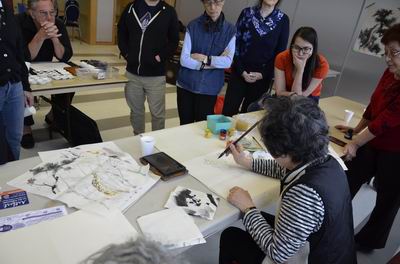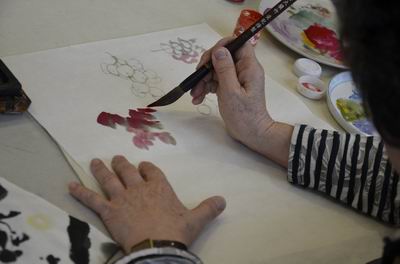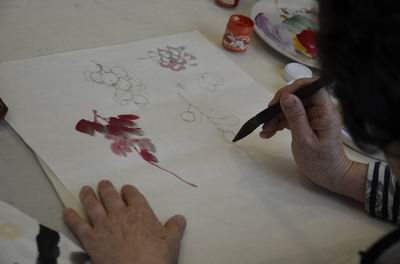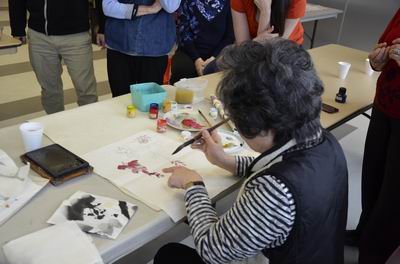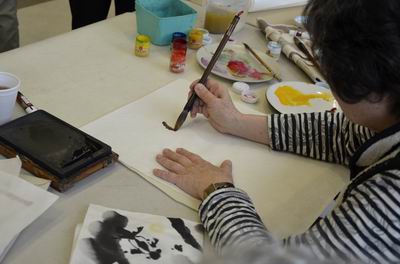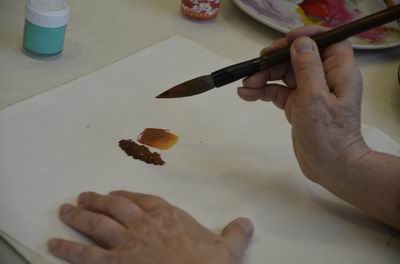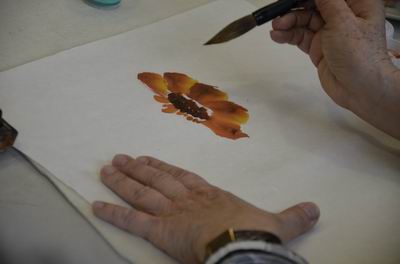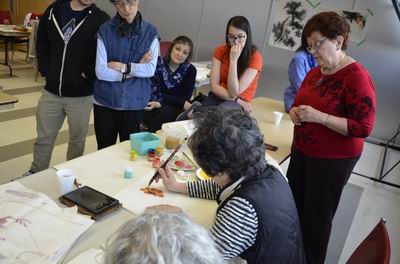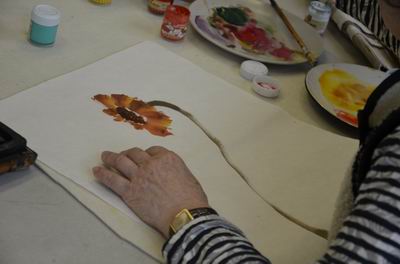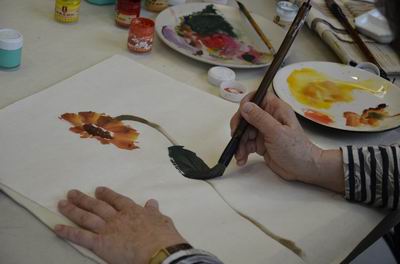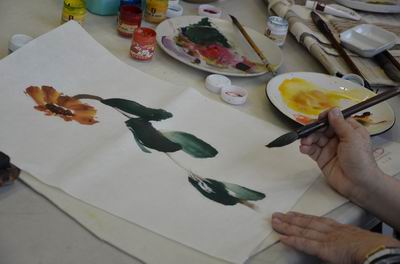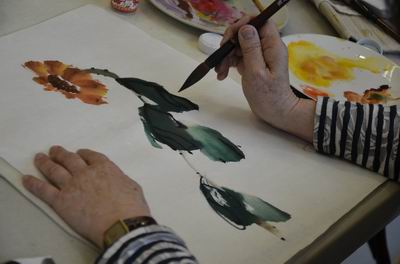Painting Wisely with Mimi Yeung - May 12th, 2018
Mimi Yeung has a wealth of painting knowledge from her years of study, painting, and teaching. In her workshop, Mimi Yeung shared what she has learned so that artists can improve their own paintings.
For example, in this painting by Mimi Yeung, note the spaces. Don't fill in all the space, as space adds to the composition of the painting. Another suggestion is to let your painting go beyond the paper. The vines and leaves lead off the page.
The trunk of this pine tree does not fill the painting from top to bottom. Mimi Yeung reminded the artists that branches of the tree or neighboring trees cross in front of the tree trunk. Paint your tree trunk in sections, allowing you to add branches in front later. Also note that the painting avoids the corners and midpoints of the paper, which makes the painting more appealing to the eye.
You can save paintings where you have made mistakes. At the top row on the left side, someone has painted a complete, straight tree trunk. However, in the second example from the left side this same painting is saved by extending the first painting with additional branches and leaves. Mimi Yeung calls this technique connecting one part of the painting with another. By carefully adding leaves and stems, and grouping elements together, as shown in these examples, a painting's elements are connected together.
Mimi Yeung next demonstrated that petals should be composed by loading a brush with lighter and darker tones. This variation in tone makes your petals similar to real petals when you paint the petals.
Rolling your brush gives an interesting effect.
Roll your brush to create petals with a light center and dark edge.
Natural-looking petals have dark and light shading. The dark edge of one petal is placed beside the lighter edge of another.
Mimi Yeung started with pine needles when demonstrating how to paint a pine tree.
Grouping clusters of pine needles creates a natural looking pine tree. Mimi Yeung joined the clusters with a branch added afterwards. Some parts of the branch are dense with clusters and other parts sparse. Your painting is more interesting when you have a mix of dense and sparse parts.
Then Mimi Yeung added the trunk. Just a part of the trunk, as it is wise to leave space for branches that cross the trunk itself.
Color was added to the clusters. A blue or green highlights the pine needles effectively.
With grapes, remember that they hang downwards in a bunch. Grapes are not aligned in a row. In general, avoid perpendicular or parallel lines in your paintings.
Grapes are heavy and do not sway much in the wind.
Mimi Yeung then created grapes using a similar technique to the petals using shading to give the rounded shape of the petals. Variation and contrast within the bunch of grapes makes them more realistic.
A vine was added to the end of the grapes. This vine blew gently in the breeze because it is lighter than the grapes. Remember, however, that anything affected by the wind should be shown blowing in the same direction.
Once you create your grapes, Mimi Yeung suggested that you add highlighting with black sumi-e ink.
To draw the sunflower, start with the seeds.
Then add the petals with a variation in light and dark tone in each petal.
This sunflower was angled. Mimi Yeung reminded us that all flowers don't face you exactly in the same way. Consider painting a flower on a slight angle, not directly facing you. This flower became the central part of the painting. Paintings should have a central element with other parts like the stem and leaves supporting it.
The petals start slightly away from the seeds. In other words, the seeds and the petals should not run into each other.
The stem was created in one brush stroke. The stem had a slight bend.
Mimi Yeung painted a leaf over top of the stem. The stem has leaves in front of the stem and around the stem.
Other leaves followed. Note that the leaves are grouped which makes the painting more natural.
Lastly, the veins were added in thin lines. All the parts of this painting were connected together. As Mimi Yeung suggested earlier, the parts of a painting should be linked together. You want interaction in your painting.
It was time for us to start on our own sunflowers using the techniques that Mimi Yeung showed us.
